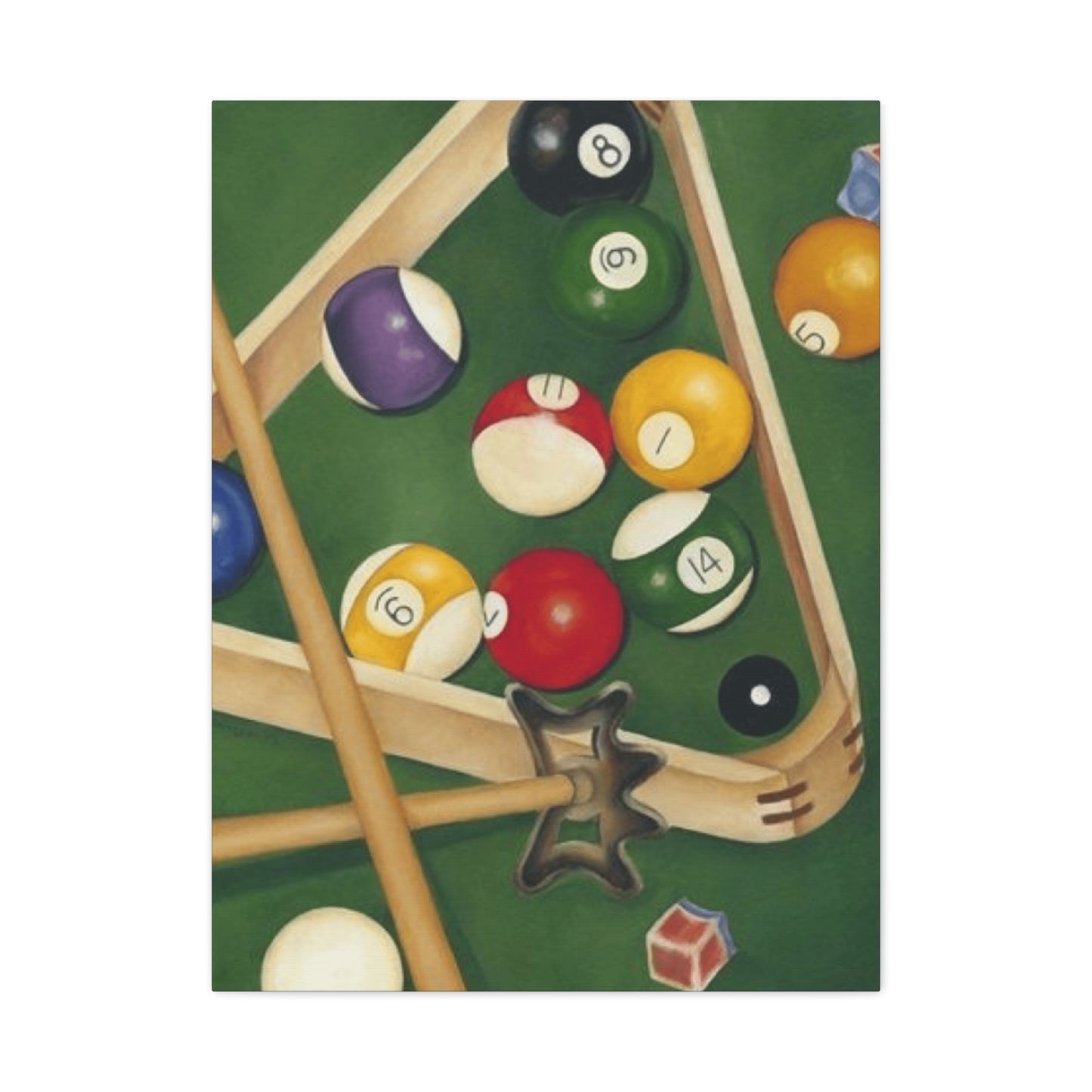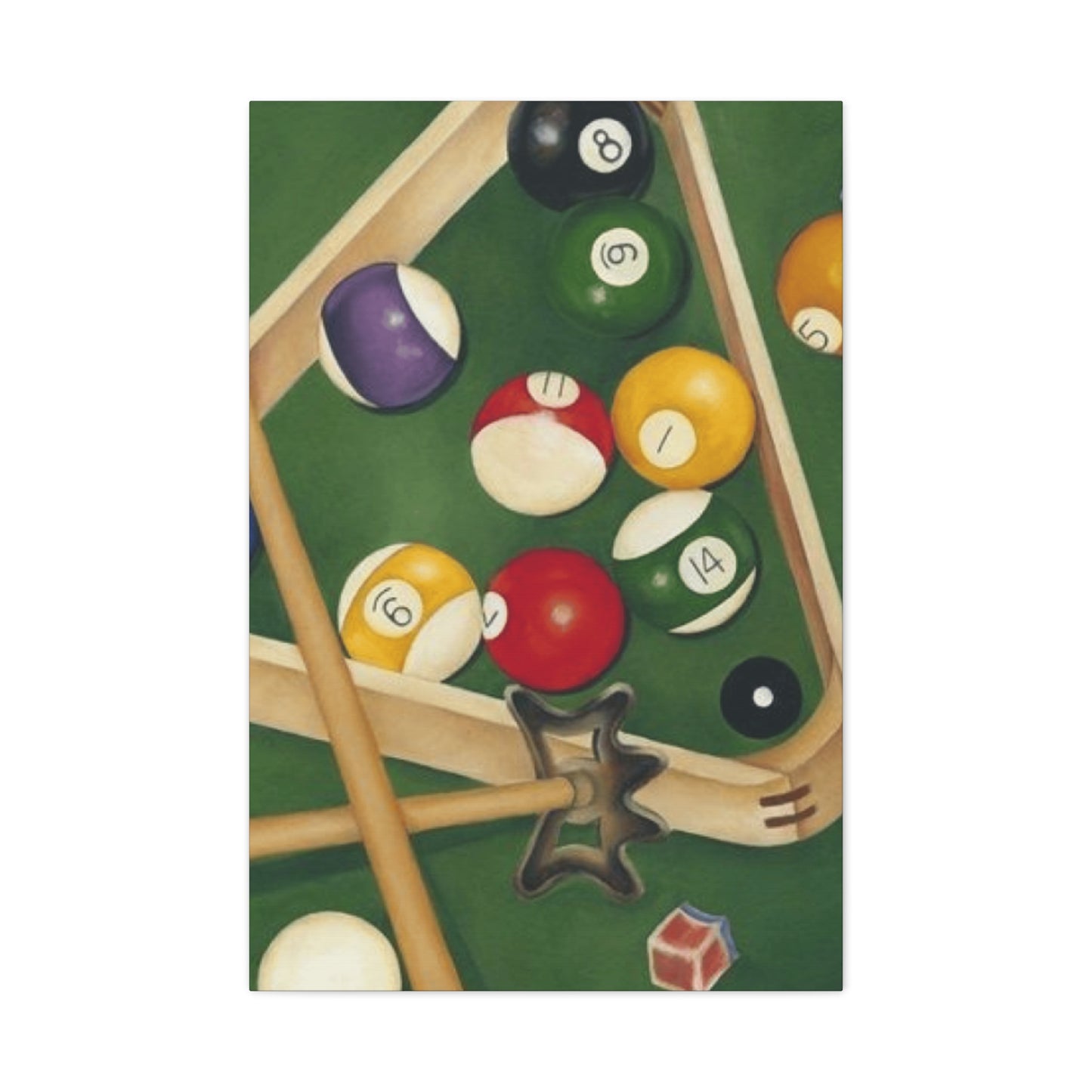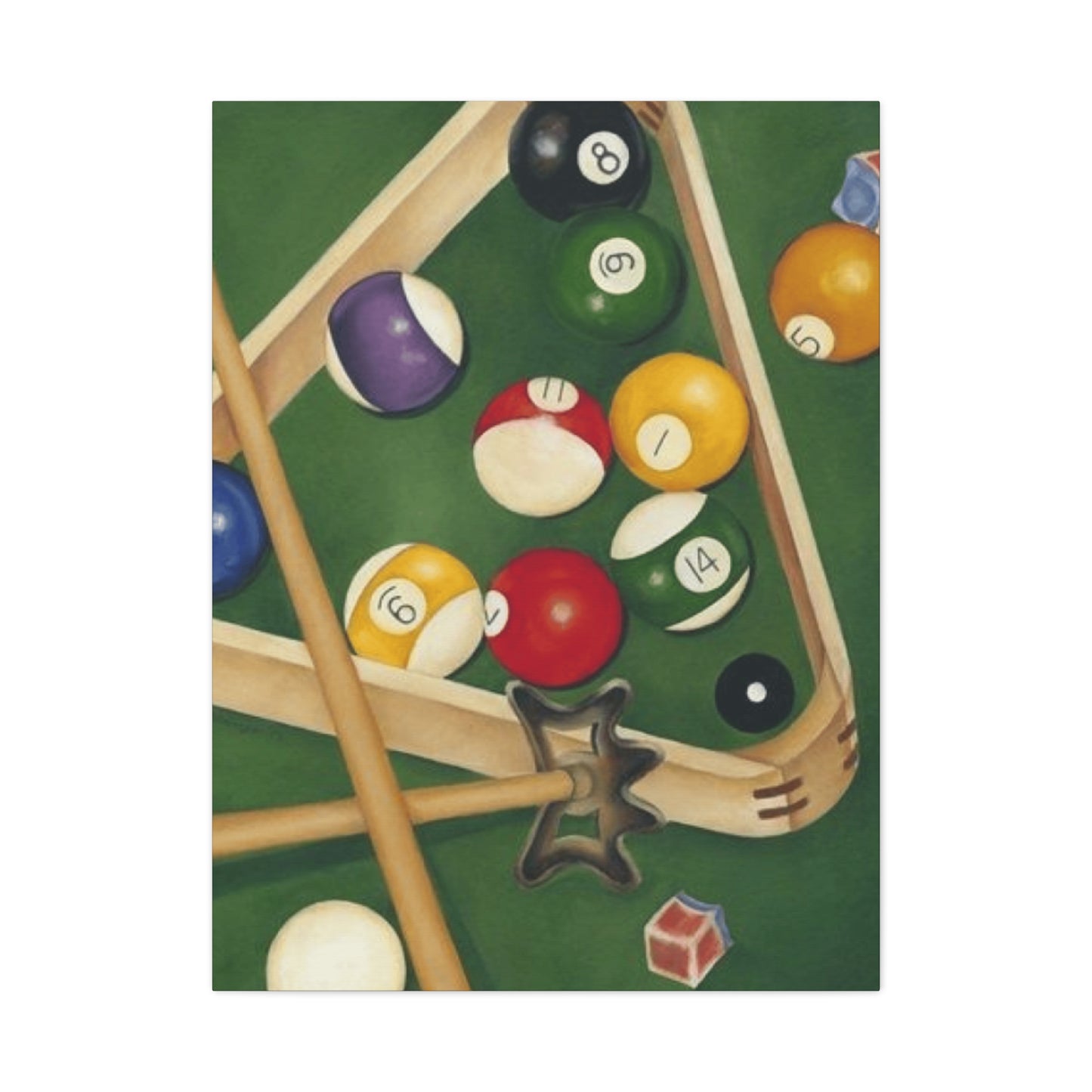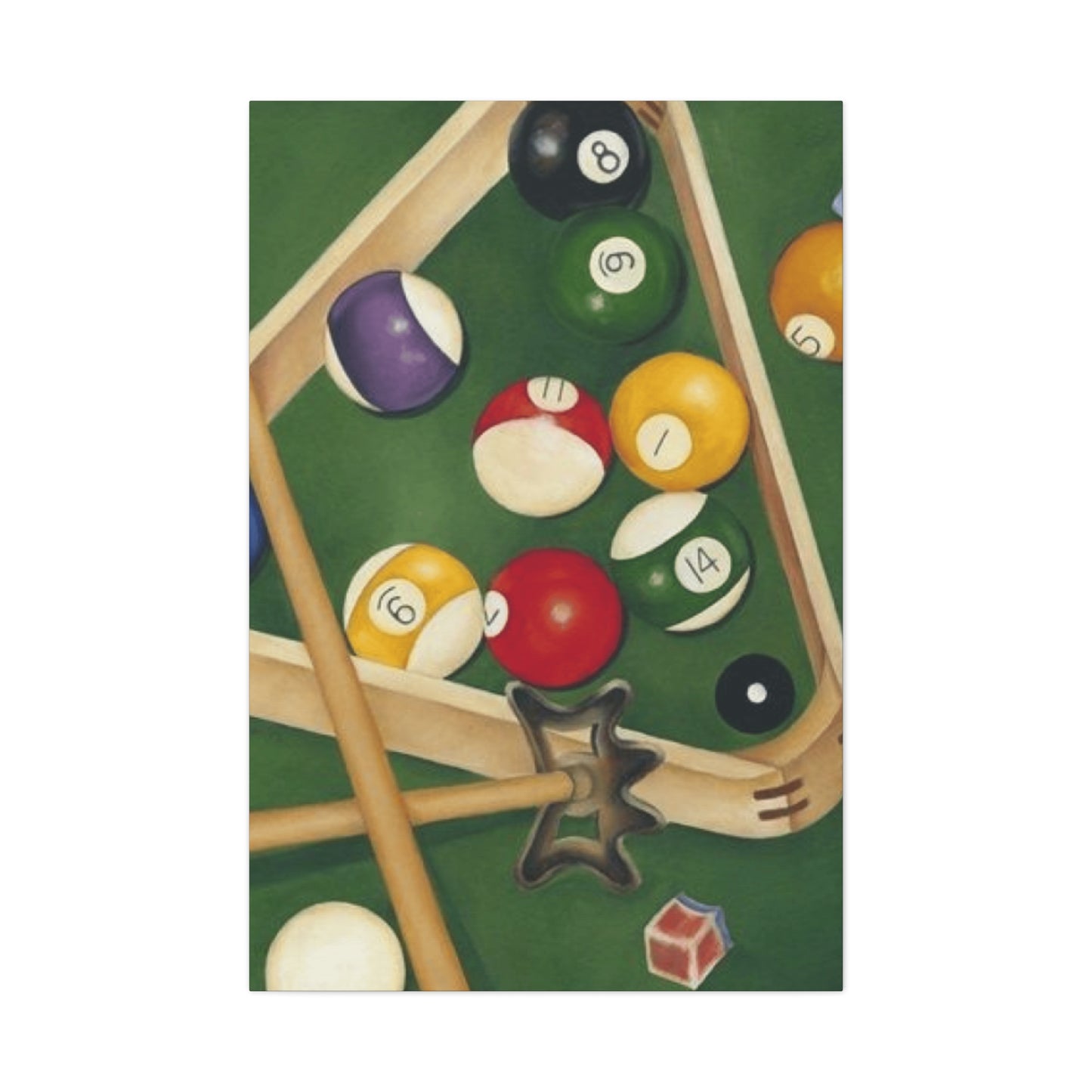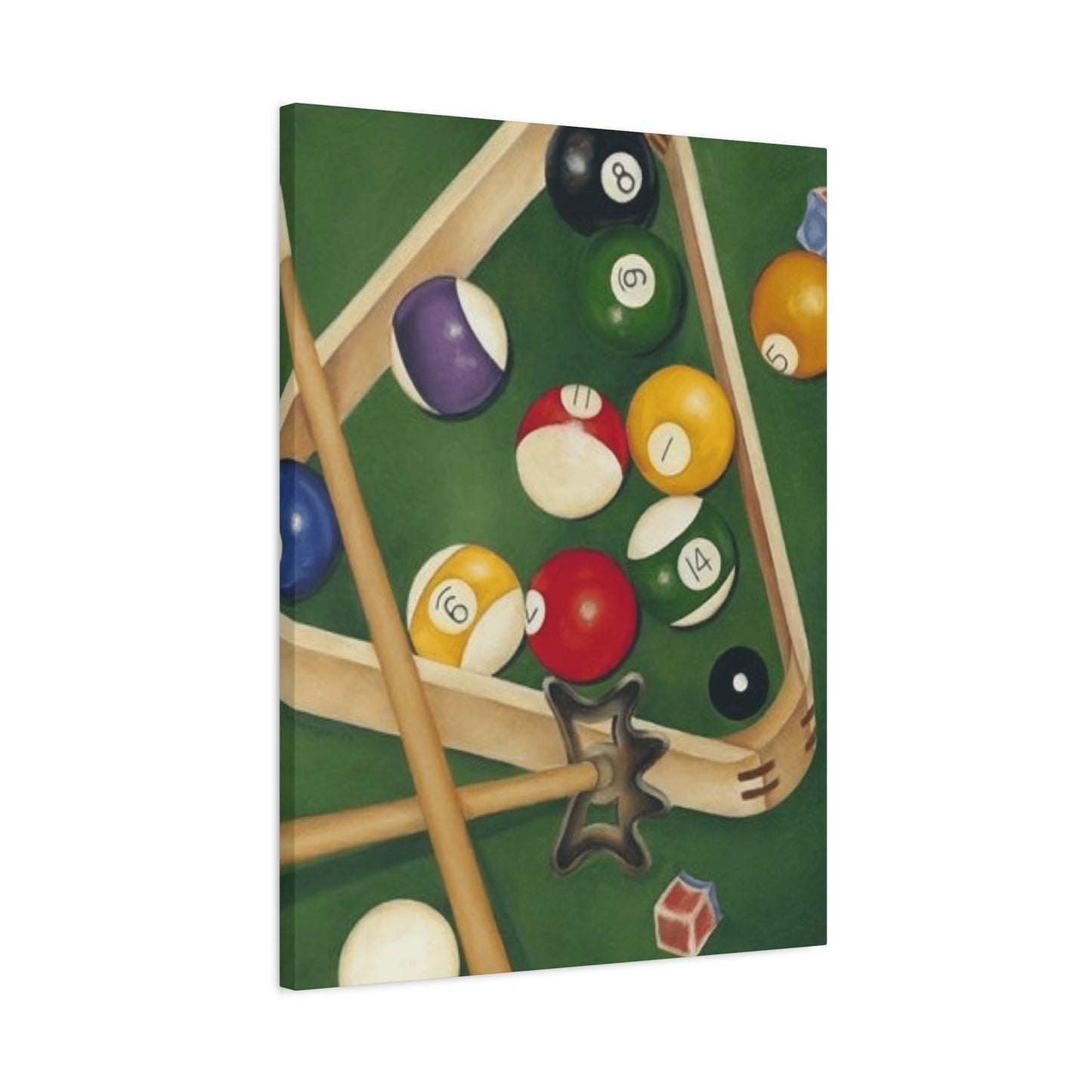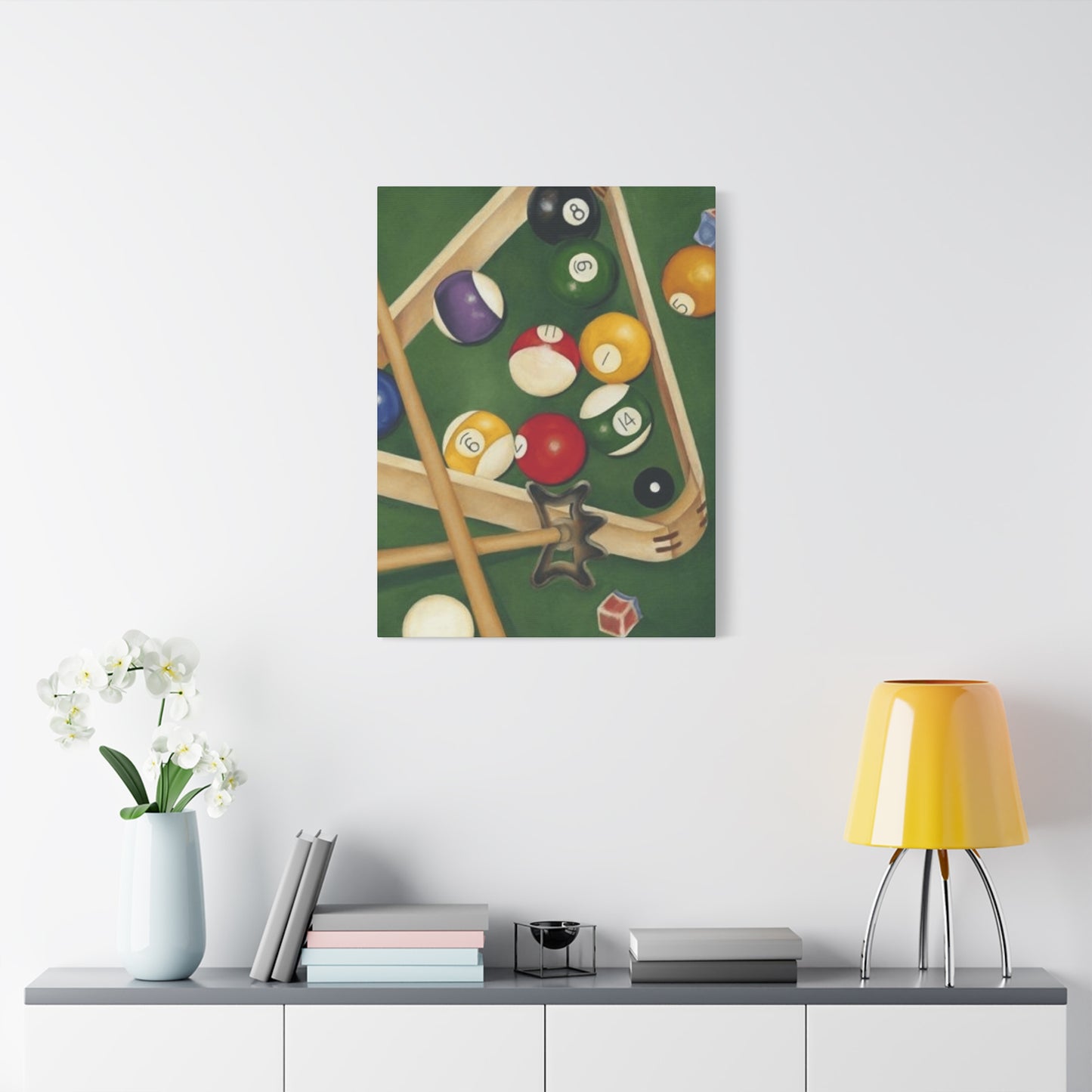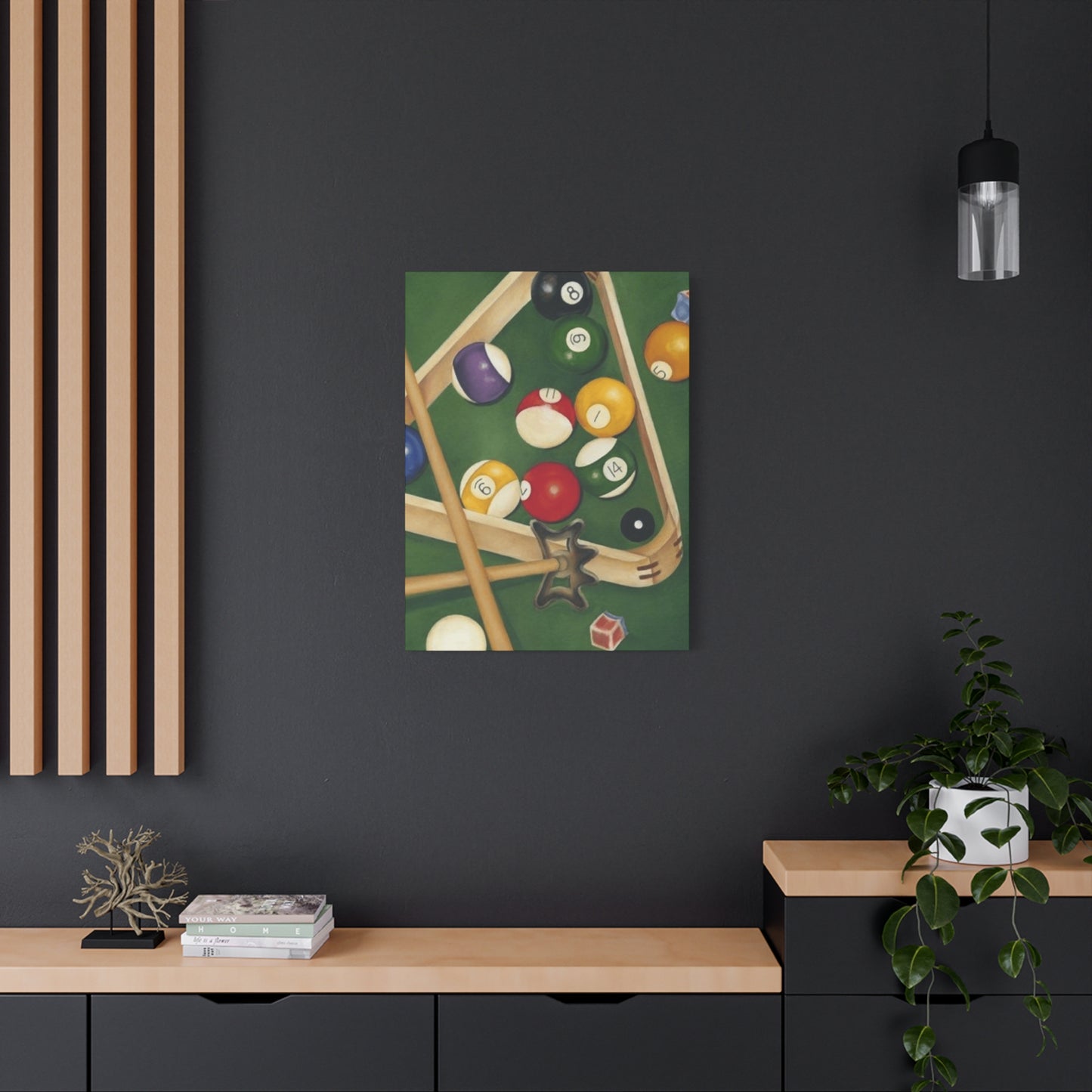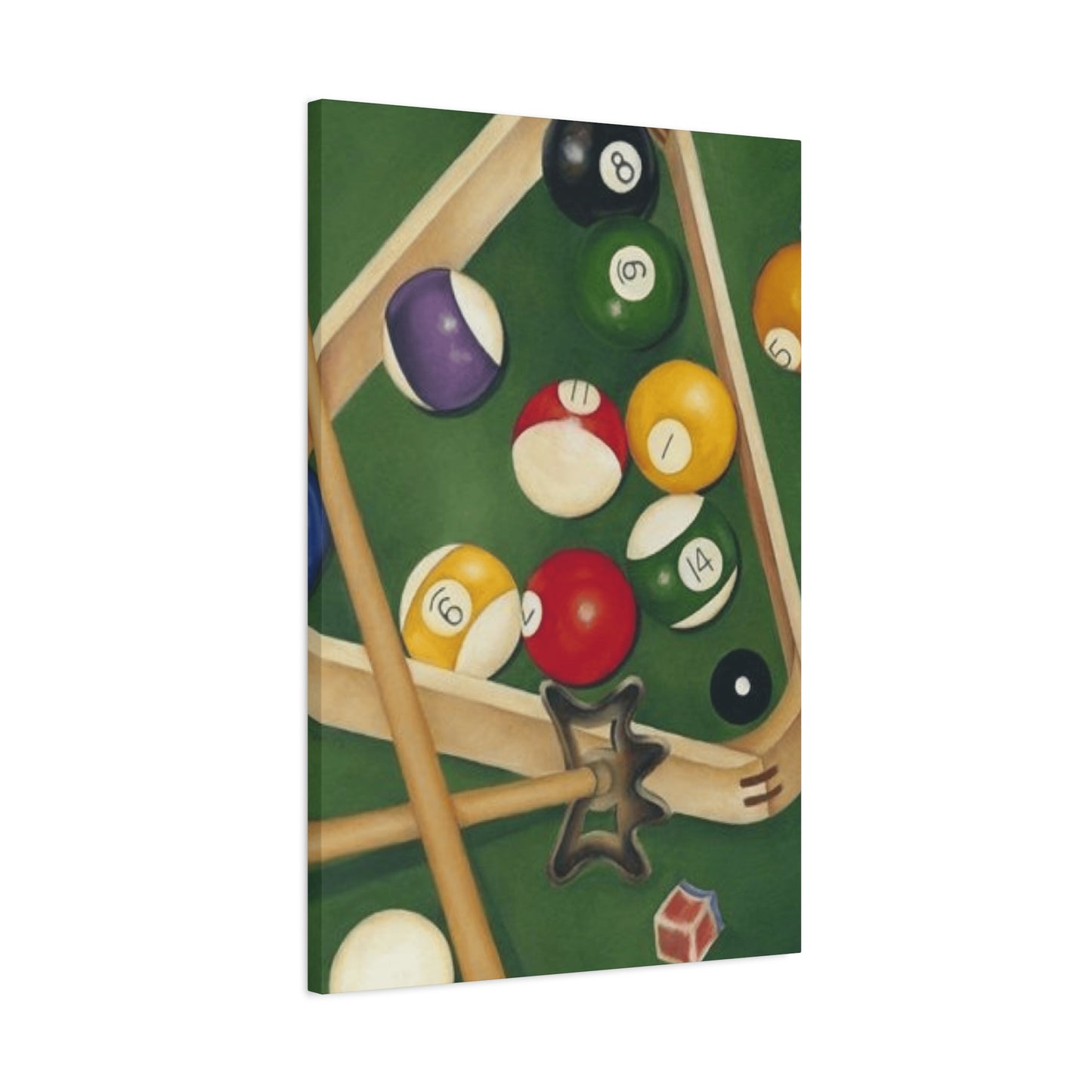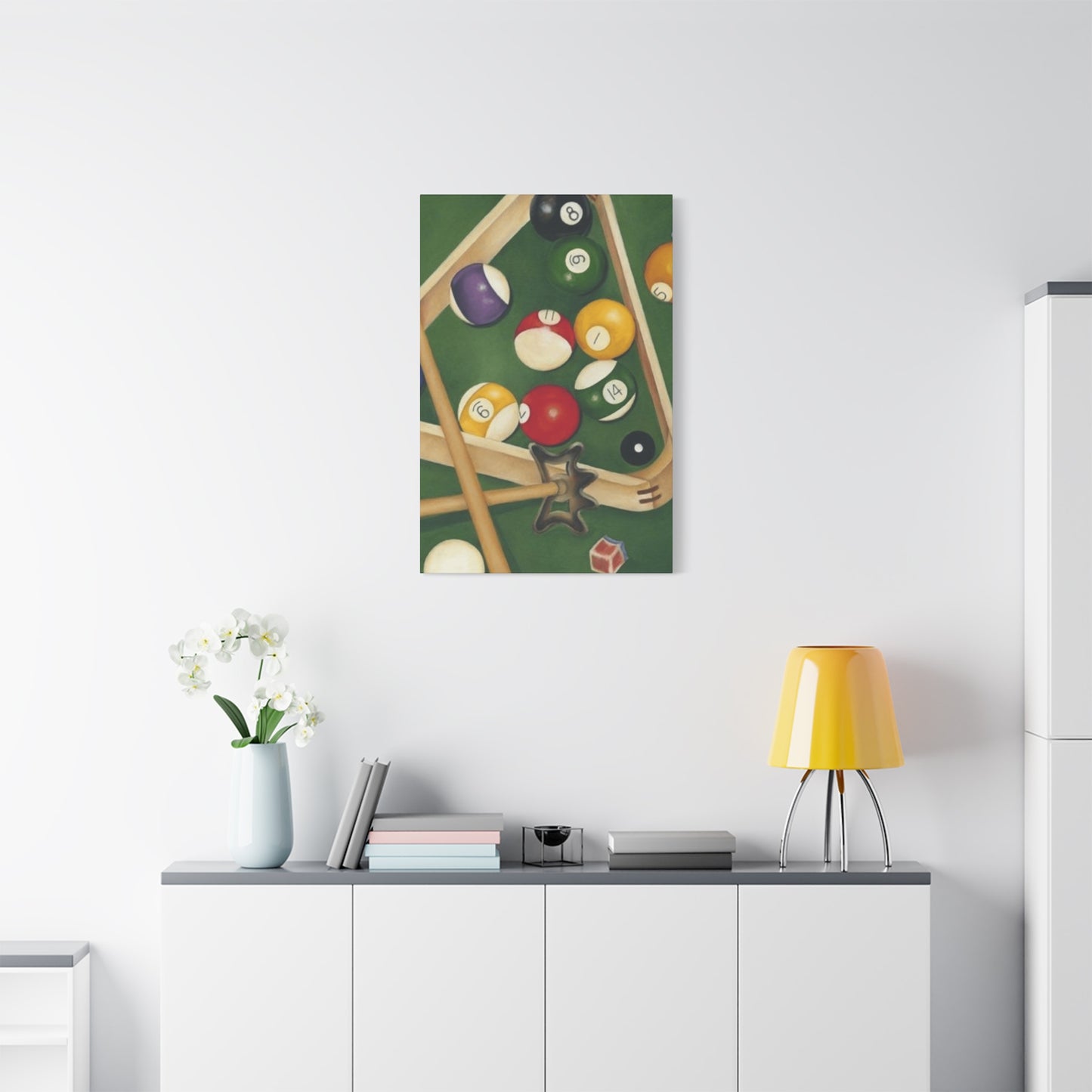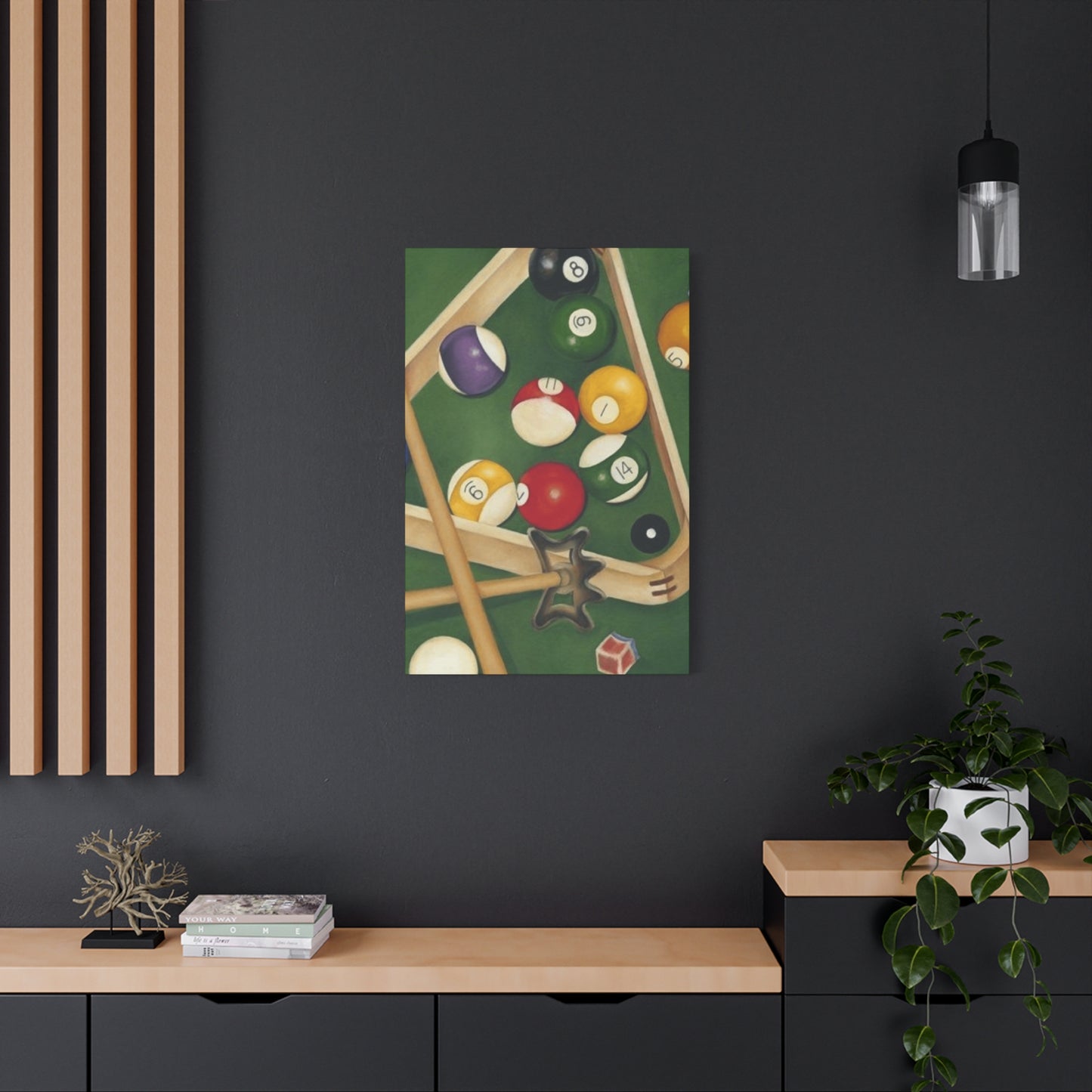Transform Your Game Room: Pool Table Wall Art That Makes Every Shot Count
The art of billiards has captivated enthusiasts for centuries, evolving from aristocratic parlor games to the beloved recreational activity we know today. This timeless appeal translates beautifully into decorative elements that can transform any room into a sophisticated gaming haven. Pool table wall art represents more than just decoration; it embodies the spirit of competition, skill, and camaraderie that defines billiards culture.
When considering artistic elements for your game room, few themes capture the essence of leisure and entertainment quite like billiards-themed artwork. These pieces serve multiple purposes, functioning as focal points that establish the room's atmosphere while celebrating the rich heritage of cue sports. The visual impact of well-chosen billiards artwork extends beyond mere aesthetics, creating an environment that encourages relaxation and social interaction.
The popularity of cue sports artwork has grown significantly in recent years, driven by homeowners seeking to create personalized entertainment areas that reflect their interests and hobbies. This trend reflects a broader movement toward creating distinctive living environments that serve specific purposes while maintaining style and sophistication. Pool table wall art fits perfectly into this concept, offering endless possibilities for customization and personal expression.
Modern homeowners increasingly recognize the importance of creating dedicated entertainment areas within their homes. These rooms serve as gathering places for family and friends, requiring thoughtful design choices that balance functionality with visual appeal. Billiards-themed artwork provides the perfect solution, offering designs that complement gaming activities while maintaining broad aesthetic appeal.
The selection of appropriate artwork for gaming rooms requires careful consideration of various factors, including room size, existing decor, and intended atmosphere. Pool table wall art comes in numerous styles, from vintage reproductions to contemporary abstracts, ensuring options suitable for any design preference. Understanding these choices enables homeowners to make informed decisions that enhance their entertainment areas effectively.
Contemporary design trends emphasize the importance of creating cohesive environments that reflect personal interests while maintaining broad appeal. Pool table wall art exemplifies this principle, offering artwork that celebrates specific hobbies while providing universal aesthetic value. This dual functionality makes billiards-themed artwork an excellent investment for homeowners seeking to enhance their entertainment areas.
Timeless Elegance: Classic Pool Table Poster Collections
Classic pool table poster collections represent the pinnacle of traditional billiards artwork, featuring designs that have remained popular for decades. These collections typically showcase iconic imagery associated with the golden age of billiards, including vintage pool halls, classic equipment, and legendary players. The enduring appeal of these designs stems from their ability to evoke nostalgia while maintaining contemporary relevance.
Traditional billiards posters often feature rich, warm color palettes that complement various decorating schemes. Deep greens reminiscent of felt tables, warm browns suggesting aged wood, and golden tones evoking vintage lighting create sophisticated color combinations that enhance any room's ambiance. These classic color schemes provide versatility, allowing the artwork to integrate seamlessly with existing decor while establishing a refined atmosphere.
The composition of classic pool table posters typically emphasizes symmetry and balance, reflecting the precision required in billiards gameplay. These design principles create visually appealing artwork that draws viewers' attention without overwhelming surrounding elements. The careful arrangement of visual elements within classic posters demonstrates the artistic potential inherent in billiards themes, elevating simple gaming imagery to fine art status.
Vintage-inspired pool table posters often incorporate typography that reflects historical advertising styles, adding authenticity to the overall design. Hand-lettered text, distressed finishes, and period-appropriate fonts contribute to the nostalgic appeal of these pieces. This attention to historical detail creates artwork that serves as both decoration and cultural artifact, preserving the heritage of billiards culture for future generations.
The popularity of classic pool table poster collections extends beyond billiards enthusiasts to include collectors of vintage advertising art and sports memorabilia. This broad appeal increases the investment value of quality pieces while ensuring their continued relevance in decorative markets. Homeowners who choose classic billiards posters often find that these pieces appreciate in value while providing ongoing aesthetic enjoyment.
Quality reproductions of vintage pool hall advertisements and tournament posters provide affordable access to classic billiards imagery. These reproductions maintain the visual impact of original pieces while offering durability and consistency unavailable in authentic vintage items. Modern printing techniques ensure that contemporary reproductions capture the subtle details and rich colors that make classic billiards artwork so appealing.
Energizing Gaming Environments with Athletic Pool Table Artwork
Athletic pool table artwork infuses gaming rooms with dynamic energy that reflects the competitive spirit of cue sports. These designs emphasize motion, precision, and skill, creating visual narratives that celebrate the athletic aspects of billiards. The incorporation of action imagery and dynamic compositions transforms static artwork into energizing focal points that motivate players and entertain observers.
Contemporary athletic billiards artwork often features bold compositions that capture crucial moments in gameplay, such as challenging shots or tournament victories. These action-oriented designs create visual excitement that complements the competitive atmosphere of serious gaming sessions. The dynamic nature of athletic artwork makes it particularly suitable for rooms designed primarily for active play rather than casual entertainment.
Color schemes in athletic pool table artwork frequently incorporate high-contrast combinations that enhance visual impact and create energizing effects. Bright blues, vibrant reds, and stark whites create compositions that demand attention while maintaining aesthetic appeal. These bold color choices reflect the intensity and focus required for competitive billiards, translating emotional energy into visual form.
The technical aspects of billiards gameplay provide rich subject matter for athletic artwork, including detailed depictions of cue techniques, ball trajectories, and table geometry. These technical elements add educational value to decorative pieces while demonstrating the complexity and skill involved in competitive billiards. Athletic artwork that incorporates technical accuracy appeals to serious players while remaining accessible to casual observers.
Modern athletic pool table artwork often incorporates photography-based designs that capture real gameplay moments with stunning clarity. High-quality sports photography provides authentic documentation of billiards action while creating visually striking artwork suitable for contemporary decorating schemes. These photographic pieces bridge the gap between fine art and sports memorabilia, offering unique decorative options for gaming enthusiasts.
Digital art techniques enable contemporary artists to create athletic billiards artwork that combines realistic imagery with stylized effects, producing unique pieces that capture both authenticity and artistic interpretation. These hybrid approaches result in artwork that satisfies both decorative and documentary purposes while providing fresh perspectives on traditional billiards imagery.
Maximizing Game Room Appeal Through Strategic Poster Placement
Strategic placement of pool table posters significantly impacts their effectiveness in enhancing game room environments. Proper positioning ensures maximum visual impact while supporting functional room layouts that facilitate comfortable gameplay and social interaction. Understanding the relationship between artwork placement and room dynamics enables homeowners to create cohesive entertainment environments that serve multiple purposes effectively.
The primary consideration in poster placement involves establishing clear sight lines that allow players to enjoy the artwork without creating distractions during gameplay. Positioning posters at appropriate heights and angles ensures visibility for both players and observers while maintaining focus on the gaming table. This balance between decoration and function requires careful planning but results in rooms that excel in both aesthetic appeal and practical usability.
Wall-mounted artwork should complement the natural flow of movement within gaming rooms, guiding visitors through the room while highlighting key features. Strategic poster placement can direct attention toward gaming tables, seating areas, and entertainment centers, creating cohesive layouts that maximize room functionality. This approach treats artwork as architectural elements that contribute to overall room design rather than isolated decorative pieces.
Lighting considerations play crucial roles in poster placement, as proper illumination enhances artwork visibility while creating atmospheric effects that improve gaming environments. Positioning posters to take advantage of natural light sources while avoiding glare problems requires understanding how light patterns change throughout the day. Supplementary lighting can highlight specific pieces while creating ambient effects that enhance overall room atmosphere.
The scale relationship between posters and surrounding elements affects visual balance within gaming rooms. Large-format posters work well in spacious rooms with high ceilings, while smaller pieces suit intimate gaming areas or rooms with multiple focal points. Understanding these scale relationships enables homeowners to select appropriately sized artwork that enhances rather than overwhelms their gaming environments.
Grouping multiple posters creates opportunities for storytelling through visual sequences that chronicle billiards history, showcase different playing styles, or demonstrate technical concepts. These curated collections provide more comprehensive decorative impact than individual pieces while offering educational value that enriches the gaming experience for players and observers alike.
Contrasting Eras: Vintage Versus Contemporary Pool Table Designs
The distinction between vintage and contemporary pool table wall art reflects broader changes in artistic styles, printing technologies, and cultural attitudes toward billiards. Vintage designs typically emphasize craftsmanship, tradition, and the social aspects of billiards culture, while contemporary pieces often focus on athleticism, precision, and individual achievement. Understanding these contrasts helps homeowners select artwork that aligns with their personal preferences and decorating goals.
Vintage pool table artwork frequently incorporates design elements that reflect the social context of historical billiards culture, including formal dress codes, elaborate gaming establishments, and ceremonial aspects of tournament play. These cultural references create artwork that serves as historical documentation while providing decorative appeal. The emphasis on social context distinguishes vintage pieces from contemporary artwork that focuses primarily on technical and athletic aspects.
Contemporary pool table designs often utilize modern graphic design principles that emphasize clean lines, bold colors, and simplified compositions. These minimalist approaches create artwork that integrates easily with modern decorating schemes while maintaining strong visual impact. The streamlined aesthetic of contemporary billiards art appeals to homeowners who prefer uncluttered environments with carefully selected focal points.
Material considerations differ significantly between vintage and contemporary pool table artwork, with vintage pieces often featuring paper-based printing on traditional substrates, while contemporary options include canvas, metal, and synthetic materials. These material differences affect durability, maintenance requirements, and visual characteristics, influencing long-term satisfaction with artwork selections.
The subject matter emphasis varies considerably between vintage and contemporary pool table artwork, with vintage pieces often celebrating the social and cultural aspects of billiards, while contemporary designs focus on technical excellence and competitive achievement. This difference reflects changing attitudes toward sports and recreation, with modern perspectives emphasizing individual performance over social participation.
Color reproduction capabilities distinguish vintage from contemporary pool table artwork, with historical pieces limited by period printing technologies while modern options benefit from advanced color management and reproduction techniques. These technological differences affect color accuracy, fade resistance, and overall visual quality, making contemporary reproductions often superior to authentic vintage pieces in terms of long-term appearance.
Authenticity considerations influence the choice between vintage and contemporary pool table artwork, with some collectors preferring original vintage pieces despite their limitations, while others choose contemporary reproductions that offer superior visual quality and durability. Understanding the trade-offs involved in these choices enables informed decision-making based on individual priorities and circumstances.
Professional Styling Approaches for Billiards-Themed Home Decor
Professional styling of billiards-themed home decor requires understanding how pool table artwork integrates with broader decorating schemes to create cohesive environments. Successful integration involves considering color relationships, scale proportions, and thematic consistency while maintaining flexibility for future changes. Professional stylists approach billiards decor as components of larger design narratives rather than isolated elements.
Color coordination between pool table artwork and existing room elements creates visual harmony that enhances overall aesthetic appeal. Professional stylists often select artwork based on accent colors present in furniture, flooring, or architectural features, ensuring that new pieces complement rather than compete with established elements. This approach creates sophisticated color schemes that appear intentional and well-planned.
Texture relationships play important roles in professional billiards decor styling, with artwork selections that complement existing material palettes creating richer sensory experiences. Smooth poster surfaces can balance rough brick walls, while textured canvas prints add visual interest to rooms dominated by smooth surfaces. Understanding these texture relationships enables professionals to create more engaging environments.
Scale progression techniques help professional stylists create visual hierarchies that guide attention through gaming rooms while maintaining balance between competing elements. Gradual size transitions between artwork pieces, furniture, and architectural features create comfortable viewing experiences that feel natural and unforced. These techniques prevent individual elements from overwhelming room compositions while ensuring adequate visual impact.
Focal point management requires professional stylists to balance the visual weight of pool table artwork against other room features, including gaming tables, entertainment centers, and architectural elements. Successful focal point management creates rooms with clear visual priorities while maintaining interest throughout the environment. This approach prevents rooms from feeling monotonous while avoiding visual chaos.
Lighting design plays crucial roles in professional billiards decor styling, with carefully planned illumination that highlights artwork while supporting functional room requirements. Professional lighting approaches often combine ambient, task, and accent lighting to create layered effects that enhance both aesthetic appeal and practical usability. Proper lighting transforms mediocre artwork into impressive focal points while ensuring adequate visibility for gaming activities.
Accessory coordination enables professional stylists to create comprehensive billiards themes that extend beyond wall artwork to include complementary elements such as cue racks, scorekeeping devices, and seating options. This holistic approach creates more convincing thematic environments while providing opportunities for personal expression through accessory selection and arrangement.
Cultural Significance and Artistic Merit of Billiards Imagery
The cultural significance of billiards imagery extends beyond recreational activities to encompass broader themes of skill, strategy, and social interaction. Pool table wall art serves as visual representation of these cultural values while providing accessible entry points for appreciating the artistic potential inherent in sports imagery. Understanding this cultural context enhances appreciation for billiards artwork while informing selection decisions.
Historical billiards imagery documents the evolution of recreational culture, preserving visual records of changing social attitudes toward leisure activities, competitive sports, and public entertainment. These historical documents provide valuable insights into cultural development while serving decorative purposes in contemporary settings. The dual nature of billiards artwork as both historical documentation and aesthetic object increases its value as cultural artifact.
Artistic interpretations of billiards themes demonstrate the creative potential inherent in sports imagery, with artists finding inspiration in geometric compositions, dynamic action, and technical precision required for successful gameplay. These artistic explorations elevate simple recreational activities to subjects worthy of serious artistic attention while making fine art more accessible to general audiences.
Social commentary embedded in billiards imagery often reflects broader cultural attitudes toward competition, leisure, and community interaction. Historical billiards artwork frequently depicts social hierarchies, gender roles, and economic relationships prevalent during specific periods, providing insights into cultural values beyond recreational activities. Contemporary pieces may address modern themes such as diversity, accessibility, and changing recreational preferences.
Technical accuracy in billiards artwork demonstrates respect for the skill and knowledge required for competitive play while providing educational value for viewers interested in improving their own abilities. Accurate depictions of proper techniques, equipment specifications, and gameplay scenarios serve both aesthetic and instructional purposes, appealing to serious players while maintaining accessibility for casual observers.
Cross-cultural perspectives on billiards provide opportunities for artists to explore universal themes through culture-specific interpretations, creating artwork that celebrates both local traditions and global recreational culture. These cross-cultural explorations demonstrate the universal appeal of cue sports while highlighting unique regional approaches to gameplay and social interaction.
The intersection of popular culture and billiards imagery reflects the broader cultural significance of cue sports, with references appearing in literature, film, and music that influence artistic interpretations. These popular culture connections create artwork that resonates with broader audiences while maintaining authenticity to billiards culture, expanding the appeal of sports-themed artwork beyond dedicated enthusiasts.
Dynamic Color Schemes and Bold Design Elements
Bold color schemes in pool table poster designs create visual impact that commands attention while establishing energetic atmospheres suitable for gaming environments. These dynamic approaches to color utilization demonstrate the emotional potential of billiards artwork while providing opportunities for creative expression that transcends traditional sports imagery limitations. Understanding color psychology enables more effective selection of artwork that achieves desired atmospheric effects.
Primary color combinations in billiards artwork often reflect the traditional colors associated with pool tables and equipment, including rich greens, deep blues, and warm browns. These classic color schemes provide familiar reference points that connect artwork to authentic billiards experiences while offering sophisticated palette options suitable for various decorating schemes. The familiarity of these colors creates immediate recognition and emotional connection with billiards culture.
Contrasting color schemes create visual excitement through dynamic relationships between opposing colors on the color wheel. High-contrast billiards artwork commands attention while creating energizing effects that complement competitive gaming atmospheres. These bold color choices require careful integration with existing room elements but reward thoughtful implementation with dramatic visual impact.
Monochromatic color schemes in pool table artwork demonstrate sophisticated approaches to color utilization that rely on tonal variations rather than contrasting hues. These subtle color relationships create refined atmospheres suitable for elegant gaming rooms while maintaining visual interest through careful attention to value and intensity relationships. Monochromatic approaches often appear more sophisticated than multi-color designs while offering easier integration with existing decor.
Gradient effects in contemporary pool table artwork utilize smooth color transitions that create depth and movement within static compositions. These gradient techniques add visual sophistication while demonstrating advanced printing capabilities available in modern reproduction methods. Gradient effects can simulate lighting conditions, create atmospheric depth, or simply provide visual interest that enhances overall composition appeal.
Accent color utilization enables billiards artwork to complement existing room color schemes while maintaining distinct identity. Strategic use of small amounts of contrasting colors can create focal points within compositions while ensuring compatibility with established decorating schemes. This approach allows homeowners to introduce new visual elements without requiring comprehensive room redesign.
Color saturation levels significantly impact the emotional effect of billiards artwork, with highly saturated colors creating energetic, youthful atmospheres while muted tones suggest sophistication and maturity. Understanding these emotional associations enables more targeted artwork selection that achieves desired atmospheric goals while maintaining aesthetic appeal.
Masculine Aesthetics: Pool Table Art for Private Retreats
Masculine-oriented pool table artwork serves the growing market of homeowners creating private retreat areas that reflect traditional masculine aesthetic preferences while providing comfortable environments for relaxation and entertainment. These designs typically emphasize bold imagery, rich colors, and themes associated with competition, craftsmanship, and achievement. Understanding masculine design preferences enables more effective artwork selection for these specialized environments.
Traditional masculine color palettes in pool table artwork often feature deep, rich tones such as burgundy, forest green, navy blue, and chocolate brown. These colors create sophisticated atmospheres that suggest stability, tradition, and refinement while providing comfortable environments for relaxation and social interaction. The psychological comfort associated with these colors makes them particularly suitable for retreat environments designed for stress relief and recreation.
Industrial design elements frequently appear in masculine pool table artwork, including imagery of vintage equipment, architectural details from historic pool halls, and references to traditional craftsmanship. These elements create visual connections to industrial heritage while suggesting durability, quality, and authenticity. Industrial aesthetic references appeal to homeowners who appreciate traditional manufacturing values and craftsmanship.
Competition themes in masculine billiards artwork celebrate achievement, skill development, and strategic thinking associated with serious gameplay. These themes resonate with individuals who appreciate competitive challenges while providing motivational imagery that encourages skill improvement and dedicated practice. Competition-focused artwork creates environments that support serious gaming while maintaining aesthetic appeal.
Material references in masculine pool table artwork often emphasize natural substances such as wood, leather, and metal that suggest permanence, quality, and traditional craftsmanship. These material references create visual connections to high-quality gaming equipment while suggesting environments that prioritize durability and long-term satisfaction over temporary trends.
Scale preferences in masculine retreat environments typically favor larger format artwork that creates commanding presence within gaming rooms. Substantial artwork pieces suggest confidence and commitment while providing adequate visual weight to balance gaming tables and entertainment equipment. Large-scale billiards artwork creates impressive focal points that establish room hierarchies and guide attention effectively.
Exclusivity themes in masculine pool table artwork often reference private clubs, exclusive tournaments, and elite gaming establishments that suggest membership in select communities. These exclusivity references appeal to homeowners who appreciate privacy, tradition, and selective social interaction while creating environments that feel special and distinctive.
Celebrating Gaming Culture Through Visual Storytelling
Pool table artwork serves as visual celebration of gaming culture, documenting the evolution of recreational activities while honoring the communities that sustain competitive and casual play. These artistic celebrations create connections between individual homeowners and broader gaming traditions while providing opportunities for personal expression through cultural participation. Understanding gaming culture enhances appreciation for billiards artwork while informing selection decisions.
Historical documentation through billiards artwork preserves visual records of gaming culture evolution, including changes in equipment design, playing techniques, and social contexts surrounding cue sports. These historical records serve educational purposes while providing authentic references for contemporary artwork creation. Historical documentation creates artwork with lasting cultural value beyond temporary decorative trends.
Community celebration aspects of gaming culture artwork emphasize the social dimensions of billiards, including friendship formation, mentorship relationships, and intergenerational knowledge transfer that occurs in gaming environments. These community themes create artwork that celebrates human relationships while acknowledging the role of recreational activities in building social connections.
Skill development narratives in gaming culture artwork document the learning processes involved in mastering billiards techniques while celebrating the dedication required for improvement. These educational themes create motivational artwork that encourages practice while honoring the effort required for achievement. Skill development imagery appeals to serious players while remaining accessible to casual observers.
Diversity representation in contemporary gaming culture artwork acknowledges the expanding demographics of billiards participation while celebrating inclusive approaches to recreational activities. These inclusive themes create artwork that welcomes broad audiences while reflecting modern values regarding accessibility and community building.
Innovation documentation in gaming culture artwork chronicles technological advances, rule modifications, and equipment improvements that continue to evolve cue sports. These innovation themes create forward-looking artwork that celebrates progress while maintaining connections to traditional foundations. Innovation-focused pieces appeal to individuals who appreciate both tradition and advancement.
Personal achievement celebration through gaming culture artwork acknowledges individual accomplishments while placing them within broader community contexts. These personal celebration themes create artwork that honors individual effort while recognizing the support systems that enable success. Achievement-focused imagery provides motivation while maintaining humility regarding personal accomplishments.
Iconic Imagery and Symbolic Representations in Billiards Art
Iconic billiards imagery creates immediate recognition and emotional connection with cue sports culture while providing rich symbolic content that enhances artistic meaning beyond literal representation. These symbolic elements add depth to decorative artwork while creating opportunities for personal interpretation and cultural commentary. Understanding symbolic content enhances appreciation for billiards artwork while informing more meaningful selection decisions.
Triangle rack symbolism in billiards artwork represents preparation, potential energy, and the moment before action begins. This powerful imagery creates anticipation while suggesting the importance of proper preparation in achieving success. Triangle symbolism appeals to individuals who appreciate strategic thinking while providing visually striking compositional elements.
Cue stick imagery serves multiple symbolic functions, representing precision, extension of personal capability, and the tools required for achievement. Cue symbolism creates artwork that celebrates craftsmanship while acknowledging the importance of quality equipment in enabling superior performance. This imagery appeals to individuals who appreciate fine tools while maintaining broad accessibility.
Ball arrangement patterns provide geometric beauty while symbolizing order, probability, and the mathematical precision underlying successful billiards strategy. These geometric elements create visually appealing compositions while suggesting the intellectual aspects of competitive play. Mathematical symbolism appeals to analytically minded individuals while providing universal aesthetic appeal.
Table perspective imagery creates symbolic representations of life stages, decision-making processes, and the consequences of strategic choices. These metaphorical interpretations add philosophical depth to billiards artwork while maintaining accessibility for viewers who prefer literal interpretations. Perspective symbolism creates artwork suitable for contemplative environments.
Lighting symbolism in billiards artwork often represents focus, clarity, and the illumination required for accurate perception and decision-making. These symbolic uses of lighting create atmospheric effects while suggesting deeper meanings related to understanding and wisdom. Lighting symbolism adds sophistication to billiards artwork while maintaining visual appeal.
Victory celebration imagery provides symbolic representations of achievement, culmination, and the rewards of dedicated effort. These celebratory elements create positive emotional associations while acknowledging the satisfaction derived from successful competition. Victory symbolism creates motivational artwork while maintaining realistic expectations regarding achievement.
Historical reference symbolism connects contemporary billiards artwork to cultural traditions, honoring heritage while maintaining relevance for modern audiences. These historical connections create artwork with cultural significance while providing educational opportunities that enrich viewer understanding of cue sports development.
Gift-Giving Potential of Billiards-Themed Artwork
Pool table posters represent exceptional gift opportunities for billiards enthusiasts, combining practical decorative value with personal significance that demonstrates understanding of recipient interests and preferences. These gifts provide lasting value while serving functional purposes in recipient homes, making them more meaningful than temporary presents. Understanding gift-giving applications enhances marketing appeal while informing selection criteria for various recipient types.
Personalization options in billiards artwork enable gift-givers to create unique presents that reflect specific recipient preferences, local connections, or shared memories related to billiards experiences. Customizable elements such as location references, personal messages, or favorite playing styles create one-of-a-kind gifts that demonstrate thoughtful consideration. Personalized billiards artwork provides emotional value that extends beyond decorative appeal.
Occasion-specific applications for billiards artwork gifts include birthdays, holidays, retirements, home purchases, and achievement celebrations that benefit from recreational themes. These versatile applications make billiards artwork suitable for various gift-giving situations while maintaining appropriate tone for celebration. Understanding occasion-specific applications enables more targeted gift recommendations.
Budget accessibility in billiards artwork makes these gifts suitable for various financial circumstances while maintaining quality and visual impact. Multiple price points enable gift-givers to select appropriate options based on relationship importance and available resources while ensuring recipient satisfaction. Budget flexibility increases gift accessibility while maintaining value perception.
Age-appropriate selections in billiards artwork ensure suitable choices for recipients across different life stages, from young adults establishing first gaming rooms to retirees creating dedicated hobby areas. Age-appropriate considerations include color preferences, imagery sophistication, and cultural references that resonate with specific generational experiences.
Relationship significance applications enable billiards artwork gifts to strengthen connections between friends, family members, and colleagues who share recreational interests. These shared interest gifts create ongoing reminders of relationships while demonstrating understanding of recipient preferences. Relationship-building potential increases gift value beyond monetary considerations.
Long-term appreciation potential in quality billiards artwork ensures that these gifts maintain value and relevance over extended periods, creating lasting satisfaction for recipients. Durable materials, classic designs, and quality reproduction methods contribute to long-term appreciation while protecting gift investment value.
Industrial Design Integration with Billiards Aesthetics
Industrial design elements complement billiards artwork through shared emphasis on functionality, durability, and honest material expression that creates sophisticated environments celebrating both recreational culture and design principles. This integration approach appeals to homeowners who appreciate authentic materials, functional beauty, and the intersection of recreation with serious design consideration. Understanding industrial design principles enhances billiards room development while creating unique aesthetic combinations.
Raw material aesthetics in industrial design provide natural partners for billiards artwork that celebrates authentic equipment construction, traditional manufacturing methods, and the honest expression of functional requirements. These material connections create cohesive environments that honor both recreational traditions and design integrity while avoiding superficial decorative treatments that lack authentic foundation.
Exposed structural elements characteristic of industrial design create architectural backdrops that enhance billiards artwork while providing functional support for gaming activities. These structural features include exposed beams, brick walls, and metal framing that suggest permanence and authenticity while creating interesting visual contrasts with refined artwork elements.
Utilitarian color palettes in industrial design often complement traditional billiards color schemes, creating natural integration opportunities that require minimal coordination effort while producing sophisticated results. Neutral tones, metal finishes, and accent colors derived from industrial processes provide background schemes that enhance billiards artwork without competing for visual attention.
Functional lighting solutions associated with industrial design provide excellent illumination for both billiards artwork display and gaming activities while maintaining aesthetic consistency throughout room design. Industrial lighting fixtures offer durability, adjustability, and authentic character that supports both decorative and functional requirements.
Scale relationships between industrial architectural elements and billiards artwork often work naturally together, with substantial structural features providing appropriate context for bold artwork selections. These scale relationships create balanced environments that feel proportional and comfortable while supporting both recreational activities and aesthetic appreciation.
Texture contrasts between smooth industrial surfaces and varied artwork finishes create visual interest while maintaining overall design coherence. These texture relationships add sensory richness to gaming environments while demonstrating sophisticated understanding of material relationships and their psychological effects.
Historical connections between industrial development and recreational culture provide thematic foundations for combining industrial design with billiards aesthetics. These historical relationships create authentic bases for design decisions while honoring cultural traditions that connect work, leisure, and community development.
Movement and Energy in Dynamic Billiards Artwork
Dynamic billiards artwork captures motion, energy, and competitive intensity through visual techniques that translate physical movement into static compositions with powerful emotional impact. These energetic approaches to billiards imagery create artwork that motivates players while entertaining observers through sophisticated artistic interpretation of recreational activities. Understanding dynamic design principles enables selection of artwork that achieves desired energy levels while maintaining aesthetic appeal.
Action capture techniques in billiards artwork freeze crucial moments of gameplay while suggesting continued motion through compositional elements such as leading lines, implied trajectories, and anticipatory positioning. These techniques create visual narratives that engage viewers while documenting the athletic aspects of competitive billiards. Action-oriented artwork appeals to serious players while providing accessible entertainment for casual observers.
Compositional movement in dynamic billiards artwork guides viewer attention through strategic arrangement of visual elements that suggest motion paths, energy flow, and competitive tension. These compositional techniques create engaging artwork that maintains viewer interest while providing multiple focal points that reward careful observation. Movement-oriented compositions prevent static appearance while maintaining visual coherence.
Color energy utilization in dynamic billiards artwork employs vibrant hues, high contrasts, and strategic color placement to create psychological effects that complement physical movement suggestions. These color techniques add emotional dimension to motion-based imagery while creating artwork that commands attention in competitive gaming environments. Energetic color schemes enhance motivation while maintaining aesthetic sophistication.
Perspective dynamics in billiards artwork utilize unusual viewing angles, dramatic foreshortening, and multiple perspective points to create visual excitement while providing fresh interpretations of familiar subject matter. These perspective techniques add artistic interest while demonstrating creative approaches to sports imagery that transcend simple documentation.
Timing implications in dynamic billiards artwork suggest crucial decision moments, perfect execution timing, and the split-second precision required for competitive success. These timing references create artwork that celebrates mental discipline while acknowledging the concentration required for superior performance. Timing-focused imagery appeals to serious competitors while remaining accessible to recreational players.
Kinetic suggestions in static billiards artwork create illusions of movement through artistic techniques such as motion blur, multiple exposure effects, and directional emphasis that imply physical action without requiring actual motion. These kinetic effects add visual sophistication while creating artwork that feels alive and engaging.
Nostalgic Gaming Room Aesthetics Through Period-Appropriate Artwork
Creating vintage gaming room atmospheres requires careful selection of period-appropriate billiards artwork that authentically represents historical periods while providing contemporary decorative appeal. These nostalgic approaches honor recreational traditions while creating environments that transport users to earlier eras of billiards culture. Understanding historical aesthetics enables authentic vintage recreation that satisfies both nostalgic desires and modern functionality requirements.
Era-specific design elements in vintage billiards artwork reflect prevailing artistic styles, cultural values, and technological limitations that characterized different historical periods. These authentic details create convincing period atmospheres while providing educational opportunities that enrich viewer understanding of recreational history. Era-appropriate artwork requires research and attention to historical accuracy while maintaining contemporary relevance.
Authentic color reproduction in vintage billiards artwork utilizes period-appropriate pigments, printing techniques, and finishing methods that create convincing historical authenticity while providing durability suitable for contemporary use. These reproduction techniques balance historical accuracy with practical requirements while creating artwork that satisfies both collectors and casual users.
Typography authenticity in vintage billiards artwork employs period-appropriate fonts, lettering styles, and graphic design approaches that enhance historical credibility while maintaining legibility and visual appeal. Authentic typography requires understanding of historical graphic design development while ensuring contemporary accessibility and aesthetic satisfaction.
Cultural context representation in vintage billiards artwork acknowledges historical social structures, recreational customs, and community relationships that influenced billiards culture during specific periods. These cultural references create authentic historical atmospheres while providing opportunities for discussion and education regarding recreational history development.
Patina effects in vintage billiards artwork simulate natural aging processes while creating authentic appearance that suggests historical authenticity without actual deterioration. These aging effects require careful balance between convincing authenticity and adequate preservation while maintaining long-term aesthetic appeal.
Architectural coordination between vintage billiards artwork and period-appropriate room elements creates comprehensive historical environments that transport users to earlier recreational eras. This coordination requires understanding of historical architectural styles while accommodating modern functional requirements and safety considerations.
Selection Criteria for Optimal Billiards Room Artwork
Choosing appropriate billiards room artwork requires systematic evaluation of multiple factors including room characteristics, user preferences, functional requirements, and aesthetic goals that influence long-term satisfaction with artwork selections. These selection criteria help homeowners make informed decisions while avoiding common mistakes that compromise room design effectiveness. Understanding selection principles enables more successful artwork choices that enhance rather than detract from gaming environments.
Room proportion analysis serves as the foundation for artwork selection, determining appropriate sizes, quantities, and placement strategies that create balanced visual compositions without overwhelming available wall areas. This analysis considers ceiling height, wall dimensions, furniture placement, and traffic patterns that influence artwork visibility and impact. Proper proportion analysis prevents common sizing mistakes while ensuring adequate visual presence.
Style compatibility evaluation ensures that selected billiards artwork complements existing room elements while contributing to cohesive design schemes that feel intentional and well-planned. This compatibility analysis considers furniture styles, color schemes, architectural features, and decorative accessories that influence overall room character. Style compatibility prevents visual conflicts while enabling personal expression through artwork selection.
Functional lighting assessment determines whether existing or planned lighting systems provide adequate illumination for artwork appreciation while supporting gaming activities and general room usage. This assessment considers natural light sources, artificial lighting placement, and potential glare problems that could compromise artwork visibility or gaming performance. Proper lighting assessment ensures artwork investment protection while maintaining functionality.
Quality evaluation criteria help homeowners distinguish between superior and inferior artwork options based on materials, printing methods, and finishing techniques that affect appearance, durability, and long-term satisfaction. These quality considerations include color accuracy, fade resistance, material durability, and construction methods that influence artwork longevity and visual appeal.
Budget allocation strategies enable homeowners to maximize artwork impact within available financial resources while ensuring adequate quality for long-term satisfaction. These strategies consider immediate costs, long-term value retention, and opportunity costs associated with different artwork choices. Effective budget allocation prevents overspending while ensuring adequate quality investment.
Personal preference integration ensures that selected artwork reflects individual tastes and interests while maintaining broad appeal for family members and guests who use gaming rooms. This integration process balances personal expression with practical considerations while creating environments that satisfy primary users without alienating others.
Future flexibility considerations evaluate how artwork selections will accommodate potential room changes, decorating updates, or evolving personal preferences that may affect long-term satisfaction with artwork choices. These flexibility considerations prevent premature obsolescence while enabling adaptive room design that evolves with changing needs.
Conversation-Starting Potential of Billiards Wall Art
Pool table posters serve as natural conversation catalysts in gaming rooms and entertainment areas, providing visual focal points that encourage discussion, storytelling, and social interaction among guests and family members. These conversation-starting capabilities enhance the social value of artwork while supporting the community-building functions of recreational rooms. Understanding conversation potential helps homeowners select artwork that facilitates social interaction while maintaining aesthetic appeal.
Discussion topics generated by billiards artwork include gameplay techniques, historical references, artistic interpretation, and personal experiences that create natural conversation starters requiring minimal host facilitation. These organic discussion opportunities reduce social pressure while providing comfortable topics for guests with varying levels of billiards knowledge. Artwork-generated conversations often lead to deeper social connections and shared experience development.
Storytelling opportunities embedded in quality billiards artwork provide platforms for sharing personal experiences, family traditions, and community memories associated with recreational activities. These storytelling platforms create meaningful social interactions while preserving cultural knowledge and personal history for future generations. Story-rich artwork adds emotional value beyond decorative appeal.
Educational aspects of informative billiards artwork create opportunities for knowledge sharing between experienced players and newcomers while providing discussion topics that combine entertainment with learning. These educational opportunities enhance social value while supporting skill development and community building within recreational environments.
Nostalgia activation through historical billiards imagery encourages sharing of personal memories, cultural experiences, and generational knowledge that enriches social interactions while preserving recreational heritage. Nostalgic artwork creates emotional connections while facilitating intergenerational communication and cultural transmission.
Humor potential in playful billiards artwork creates lighthearted conversation opportunities while relieving social tension and encouraging relaxed interaction among guests. Humorous elements require careful balance to maintain taste and broad appeal while providing entertainment value that enhances social environments.
Conclusion
Transforming your game room with pool table wall art is an excellent way to celebrate the spirit of the game while adding personality and style to your space. Pool table art not only honors the skill, precision, and fun of billiards but also creates an inviting atmosphere where friends and family can gather, compete, and enjoy memorable moments. Whether you opt for realistic depictions of classic pool tables, abstract interpretations of the game’s dynamic energy, or vintage-inspired prints, pool-themed wall art elevates the ambiance and reflects your passion for the sport.
One of the key benefits of incorporating pool table wall art into your game room is its ability to tie the space together visually. The imagery of balls, cues, racks, and the table itself serves as an instant focal point, reinforcing the room’s purpose and encouraging a playful yet sophisticated vibe. The colors and shapes common to pool artwork—rich greens, deep reds, and sleek blacks—often complement traditional game room décor, while bolder, modern pieces can inject energy and contemporary flair.
Beyond aesthetics, pool table wall art can serve as a source of inspiration and motivation. Capturing the tension of a perfect shot, the flow of movement, or iconic moments in billiards history, these artworks celebrate skill and strategy, reminding players of the focus and finesse required to “make every shot count.” This connection between art and game elevates the overall experience, making your game room not just a place to play but a space that honors the art of the game itself.
Pool-themed art is also versatile in style and scale. From large murals that dominate an entire wall to smaller framed prints or metal art pieces, you can choose designs that best suit your room size and personal taste. Pairing these artworks with complementary décor—such as vintage signs, trophy displays, or themed lighting—can further enhance the atmosphere, creating a cohesive and engaging environment.
In conclusion, pool table wall art is a dynamic and stylish way to transform your game room into a vibrant hub of fun and competition. It combines aesthetic appeal with meaningful connections to the sport, inspiring every player to bring their best game. By thoughtfully selecting and displaying pool-themed art, you turn your game room into a space where every shot truly counts.











